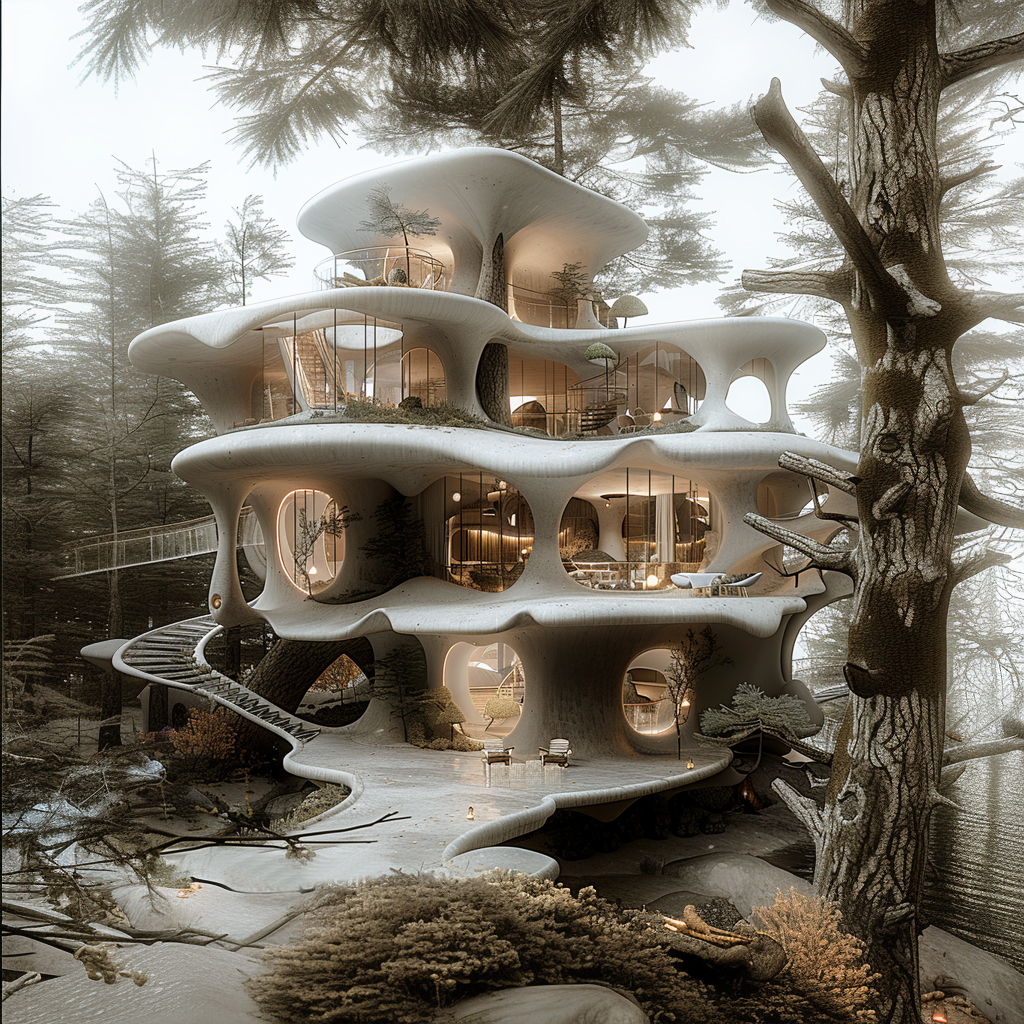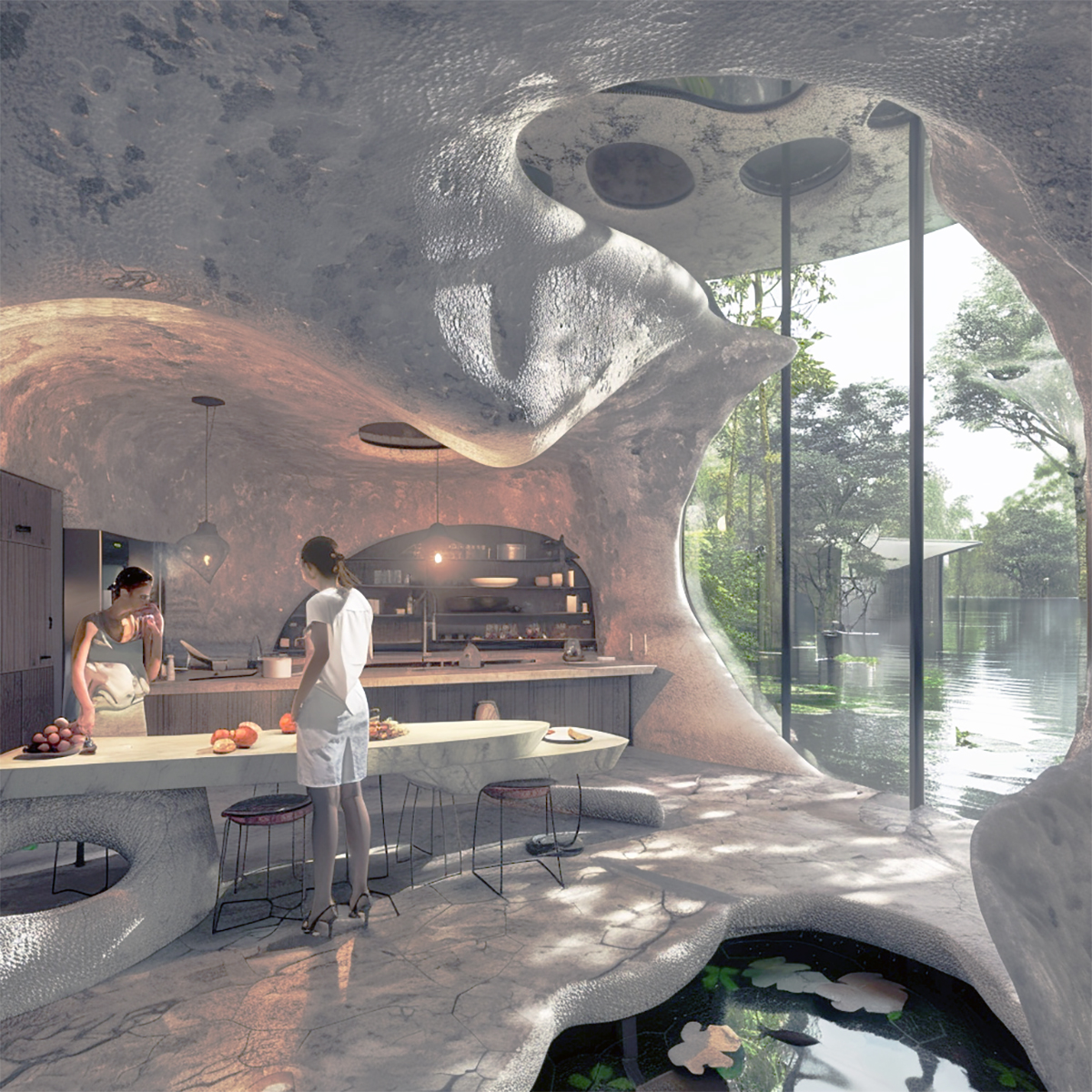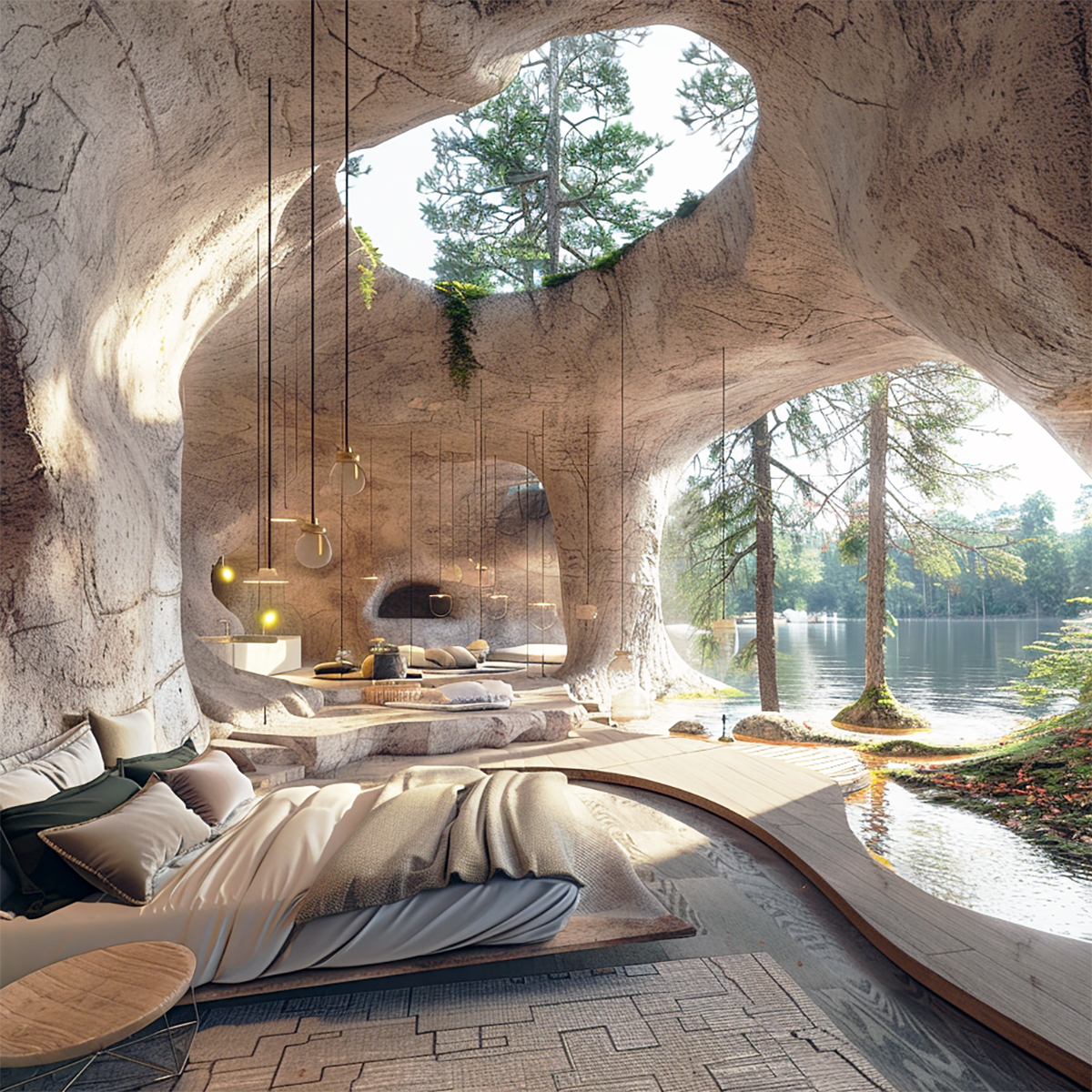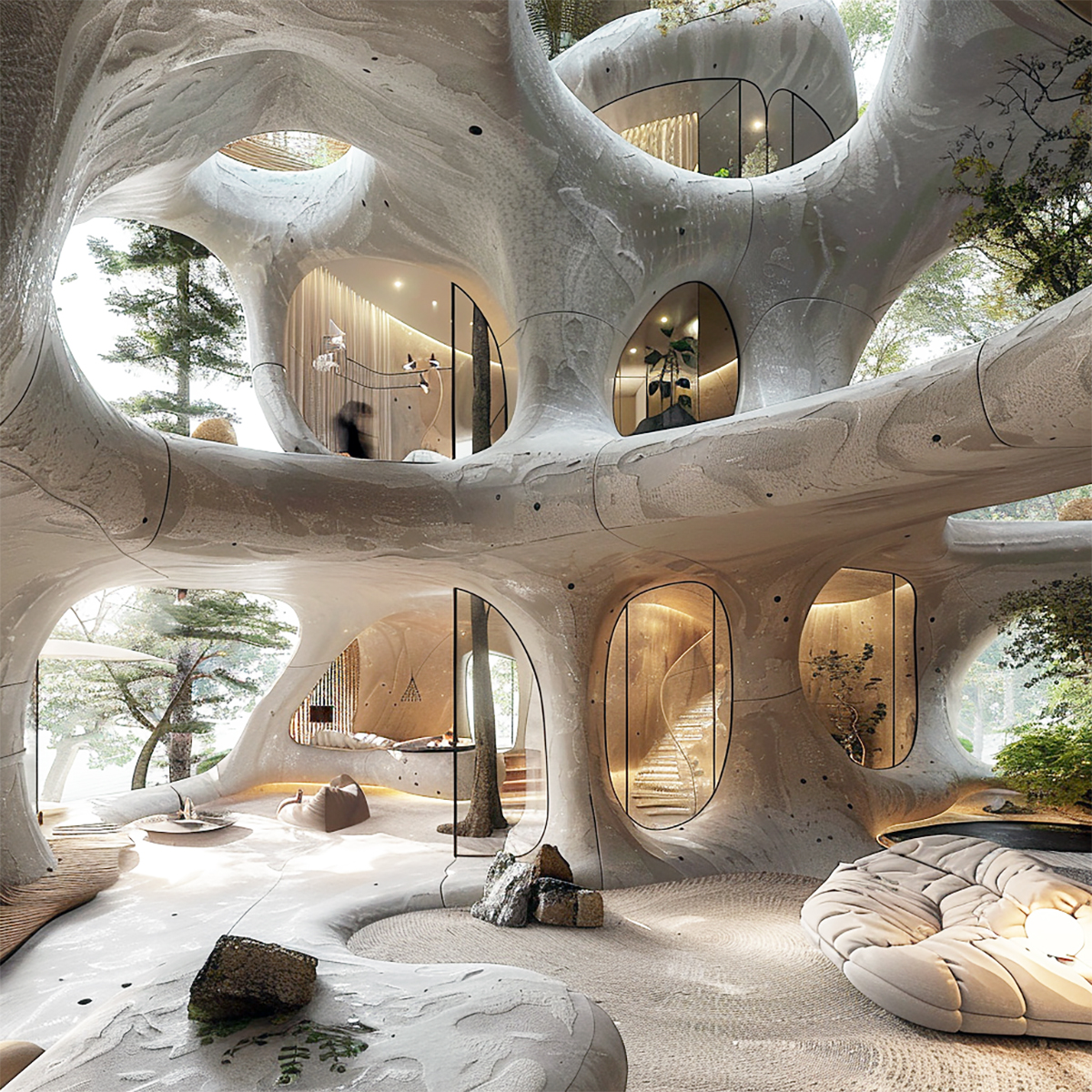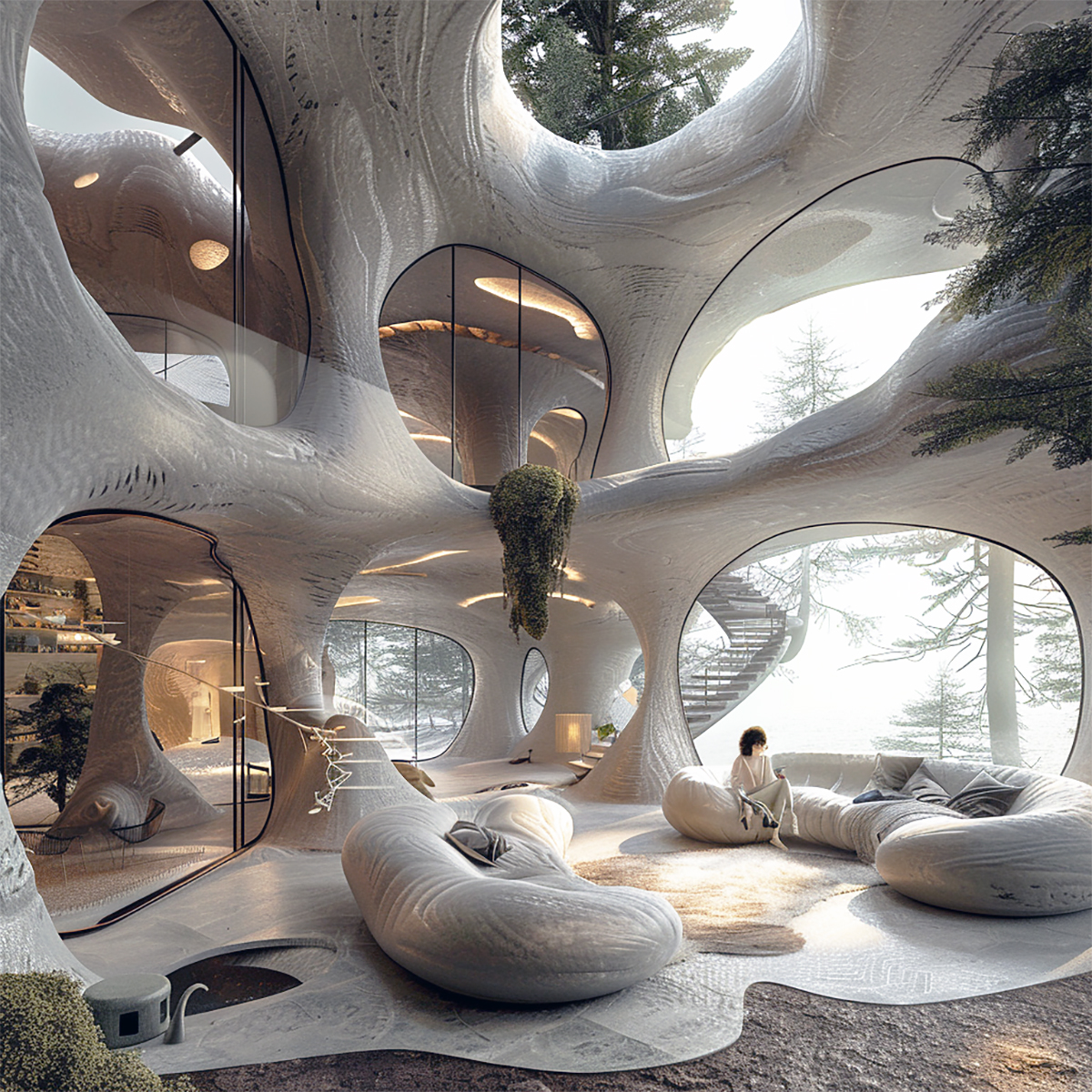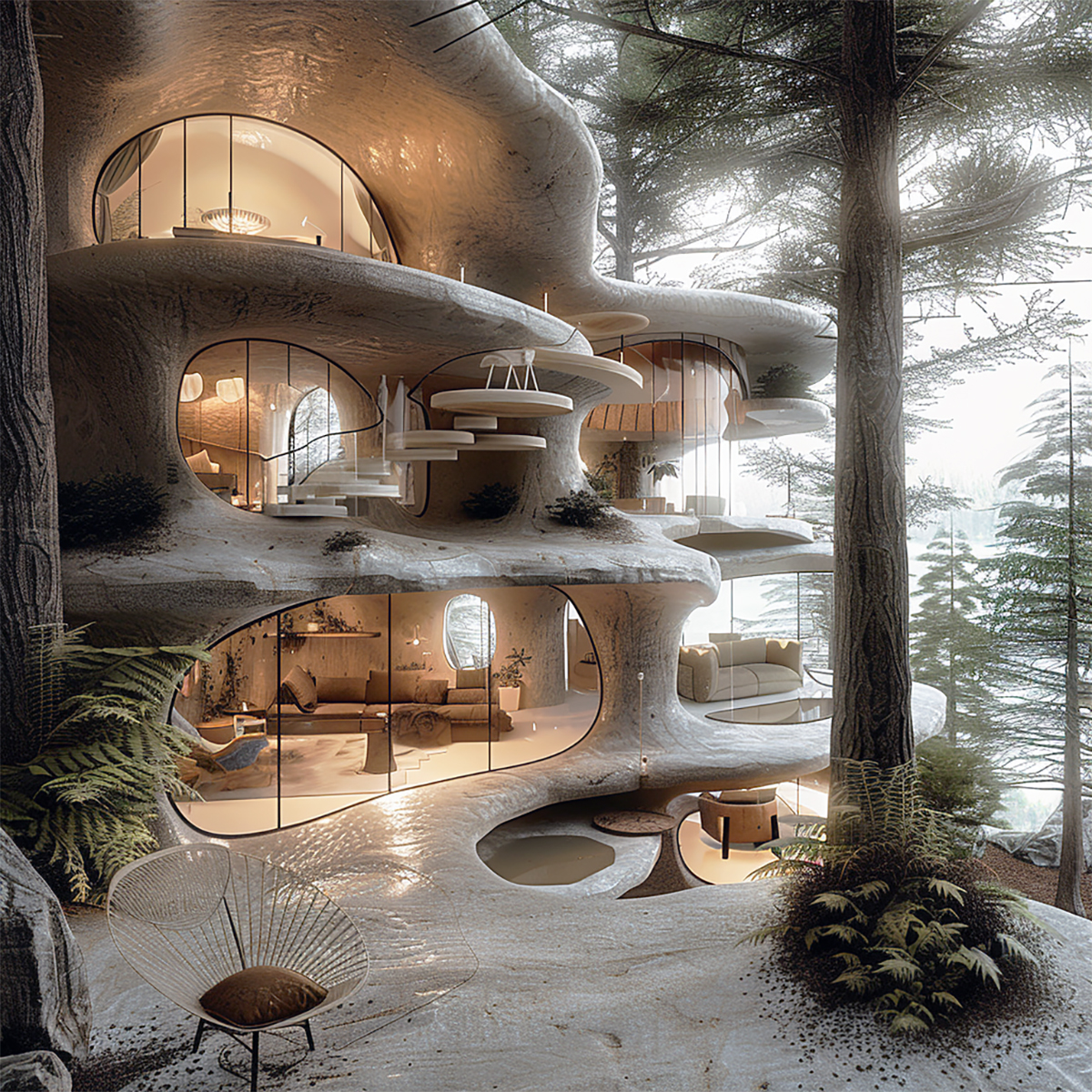MYCELIUM MAISON


Architect / Designer:
Studio:
Copyright:
Country:
Nestled in the capitol forest of Washington, the design draws its inspiration from the intertwining threads of mycelium. Mycelium is a long thread like mushroom roots, which typically grow in a humid and shaded area. These extremely thin white threads grow in all directions forming a strong web. The strong network of these mycelium filaments acts like an anchor for the mushroom.
The house tries to seek balance between built spaces and the surroundings and is designed with sustainability in mind. The eco-friendly & biodegradable Mycelium is used as a primary material for construction. They are fire resistant and non-toxic with high insulating abilities. Once dry, they become porous and therefore extremely lightweight. Mycelium is a renewable material, unlike traditional materials like steel and concrete. This low-cost material offers a promising step toward an architectural vision that is at one with nature. Natural vegetation is used as external shading to reduce the overall solar heat gain during summers while providing a barrier from the cold winds during winter. Passive and active climate control strategies have been utilized to provide optimal thermal, acoustic, and lighting comfort.
Mimicking the growth of mycelium, the intent of the design was to integrate the built space with the surrounding landscape while exploring the interplay of humans. The architecture feels like it’s diffusing and developing freely. The generative and ever evolving form resembles the growth of a mushroom. The surrounding landscape is interwoven with the interior spaces thus blurring the boundaries between the two. The interior spaces are segregated as well as blended, creating a natural flow between the spaces. The large opening and windows provide a panoramic view of the lake and evergreen vegetation.

